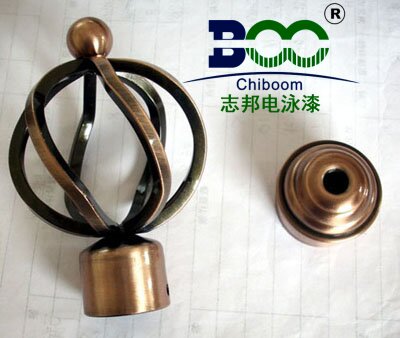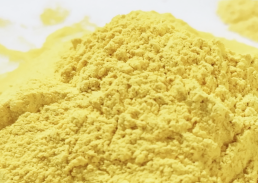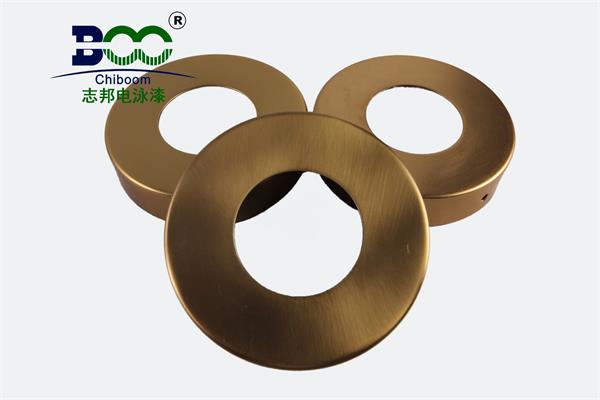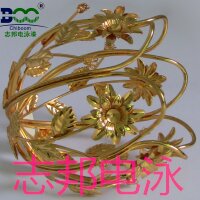Characteristics of Electrophoretic Paint Wastewater and Its Treatment Challenges
Electrophoretic coating, as an advanced coating technology, has been widely applied in industries such as automobiles, building materials, hardware, and home appliances due to its coating characteristics of being full, uniform, smooth, and having significantly better hardness, adhesion, corrosion resistance, impact resistance, penetration performance than other coating processes. However, the wastewater generated during the electrophoretic coating process has unique and complex characteristics, posing a series of challenges for wastewater treatment.
The main characteristics of electrophoretic paint wastewater include high organic content, the presence of heavy metal ions, unstable pH values, high suspended solids content, and high conductivity. The electrophoretic paint contains various organic compounds, such as resins and solvents, which partially dissolve into the wastewater during the coating process, resulting in high COD (Chemical Oxygen Demand) and BOD (Biological Oxygen Demand) values in the wastewater, posing significant pressure on the ecological environment. Meanwhile, heavy metal ions such as zinc and nickel are typically added to the electrophoretic bath solution to improve coating performance. Once these heavy metals are discharged into the environment, they are difficult to degrade and have bioaccumulation properties, posing great harm to the environment and human health.

During the electrophoretic coating process, due to electrophoresis, electrodeposition, electrolysis, electroosmosis, and other effects, the pH value of the wastewater may fluctuate significantly, affecting the selection and design of subsequent treatment processes. Additionally, paint residue, dust, and other impurities that fall off during the coating process mix into the wastewater, forming suspended solids, which increase the difficulty of wastewater treatment.
The high conductivity of electrophoretic paint wastewater is also a major challenge in the treatment process. Since the electrophoretic paint solution carries a charge during electrophoresis, electrophoretic wastewater generally has high conductivity, which has a certain corrosive effect on wastewater treatment facilities, requiring the use of corrosion-resistant materials and equipment for treatment.

In response to these characteristics of electrophoretic paint wastewater, a series of scientific and reasonable treatment processes and technical means need to be adopted. Firstly, devices such as grates and screens are used to remove large particulate impurities from the wastewater to prevent clogging of subsequent treatment equipment. Then, depending on the specific conditions of the wastewater, acids or bases are used to adjust the pH value to a suitable range, creating conditions for subsequent chemical reactions. Next, chemical precipitants are added to the wastewater to form insoluble precipitates of heavy metal ions, achieving solid-liquid separation through sedimentation tanks. At the same time, flocculants are added to promote the aggregation of fine particles into larger flocculent substances, improving sedimentation efficiency.
In the filtration stage, sand filters or microfiltration membranes can be used to filter the supernatant to further remove suspended solids and fine particles. For wastewater with high organic content, biological treatment methods such as activated sludge processes and biological contact oxidation processes can be used to degrade organic pollutants. For organics that are difficult to biodegrade, advanced oxidation technologies can be employed for advanced treatment.
An automobile manufacturing factory has successfully achieved compliant discharge and partial reuse of electrophoretic coating wastewater through scientific and reasonable treatment processes and technical means. The factory removes large particulate suspended solids through grates, removes some suspended solids and heavy metal ions through sedimentation tanks, and then adjusts the pH value of the wastewater to a suitable range using acid-base regulators. Next, flocculants and coagulants are added to aggregate the fine particles in the wastewater into larger flocculent substances, which are then removed through sedimentation tanks and filters. Finally, ultrafiltration membrane technology is used to remove electrophoretic paint particles from the wastewater, while simultaneously recovering some electrophoretic paint, and ozone oxidation technology is employed to remove refractory organics.
Electrophoretic coating wastewater treatment is an important environmental protection task. Through scientific and reasonable treatment processes and technical means, compliant discharge of wastewater and recycling of resources can be achieved, providing strong support for the sustainable development of enterprises.





 WeChat
WeChat